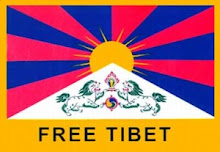
«The Steel Drum, or Pan, is a unique instrument, and one of the most recently invented. It is a skillfully hammered 55-gallon oil drum which has been carefully tuned to produce tones. The Steel Drum carries the full chromatic range of notes, and can produce just about any type of music you can think of!
During British Colonial rule of Trinidad in the 1800's, hand drums were used as a call for neighbourhood gangs to collect and 'mash up' with the other gangs. Hoping to curb the violence, the government outlawed hand drums in 1886.
Deprived of the drums, the Trinidadians turned to the 'Bamboo Tamboo', where each member of the group would carry a length of bamboo and pound it on the ground as the group walked through the streets, producing distinctive rhythmic 'signatures' which identified each gang. (The word "Tamboo" is from the French "tambeau", or "drum".) When two gangs met on a march, they would pull out the machetes they had hidden inside the long bamboo poles, which solved none of the violence problems.
Soon, the government outlawed the bamboo bands as well. Deprived of all traditional rhythmic instruments, the Trinis took any objects they could find, including garbage can lids, old car parts, and empty oil barrels (from the Navy bases on the island). They used these instruments to form the Iron Bands, which marched down the streets playing the same distinctive rhythms. These impromptu parades were called Iron Band.
One day in the late 1930's, during a particularly rough iron band session, somebody discovered that a dented section of barrel head produced a tone. Winston "Spree" Simon is generally credited with being the first person to put a note on a steel drum. Originally the pans were convex, like a dome rather than a dish. Ellie Manette, a pan-maker still active in the US today, was the first to dish out a pan and give the steel drum its mature form. Many tuners began experimenting with and producing tuned 'pans', eventually forming large groups of the neighborhood panmen into orchestrated bands. There are many great musicians, arrangers and innovators in the history of the steel bands.
The musical competitions which began to take place each year at Carnival quickly replaced the street fights. There are two competitions, one for the popular songs of the year, and a separate contest which showcases both the technical ability of each band and the versatility of the steel drum by presenting highly orchestrated classical pieces. Fifty years after the first such contest, the rivalries between steel bands still exist, but manifest themselves in an excellent quality of musicianship.
The bands, which include Phase Two Pan Groove, the Amoco Renegades, the Trinidad Cement Limited Skiffle Bunch, and the Silver Stars, each perform a masterfully arranged, ten-minute piece for the yearly Panorama competition. Each band can contain over 100 musicians and 300 pans, and rehearses relentlessly for months before Carnival in the hopes of winning the Panorama and being crowned champion steel band for the year. If you are interested in the music produced by this event, Panorama recordings can be found at many fine record stores.» (More info and links here)
Link in comments
 «The word ‘Kutumba’ holds a special meaning in the Nepali language. It stands for a unique bond amongst community members. As their name, Kutumba is all about bringing together traditional folk tunes and instruments with new and improvised sounds and ideas.
«The word ‘Kutumba’ holds a special meaning in the Nepali language. It stands for a unique bond amongst community members. As their name, Kutumba is all about bringing together traditional folk tunes and instruments with new and improvised sounds and ideas.





















